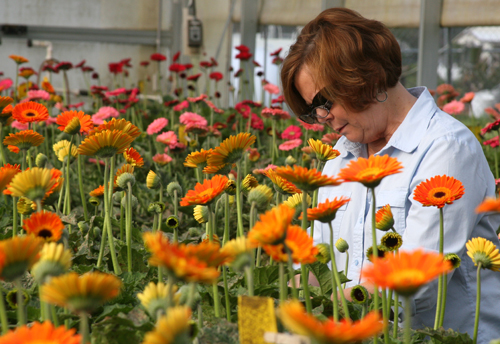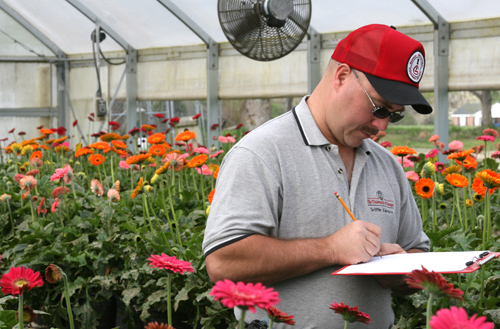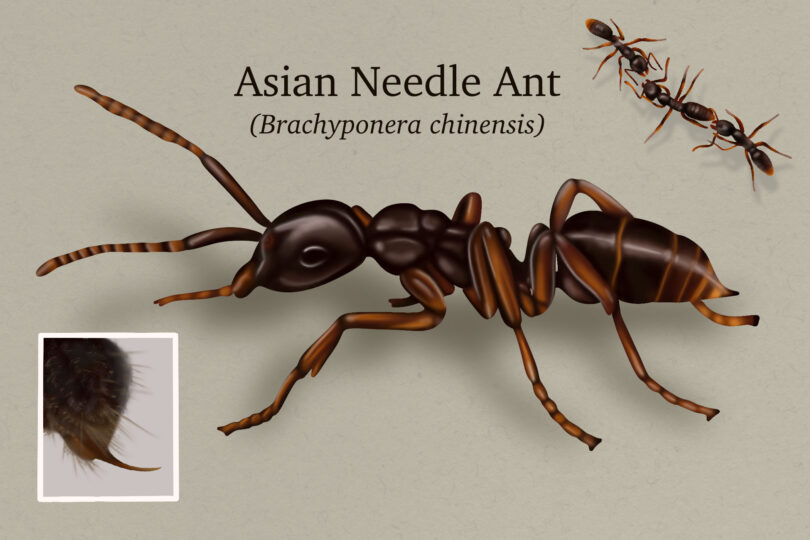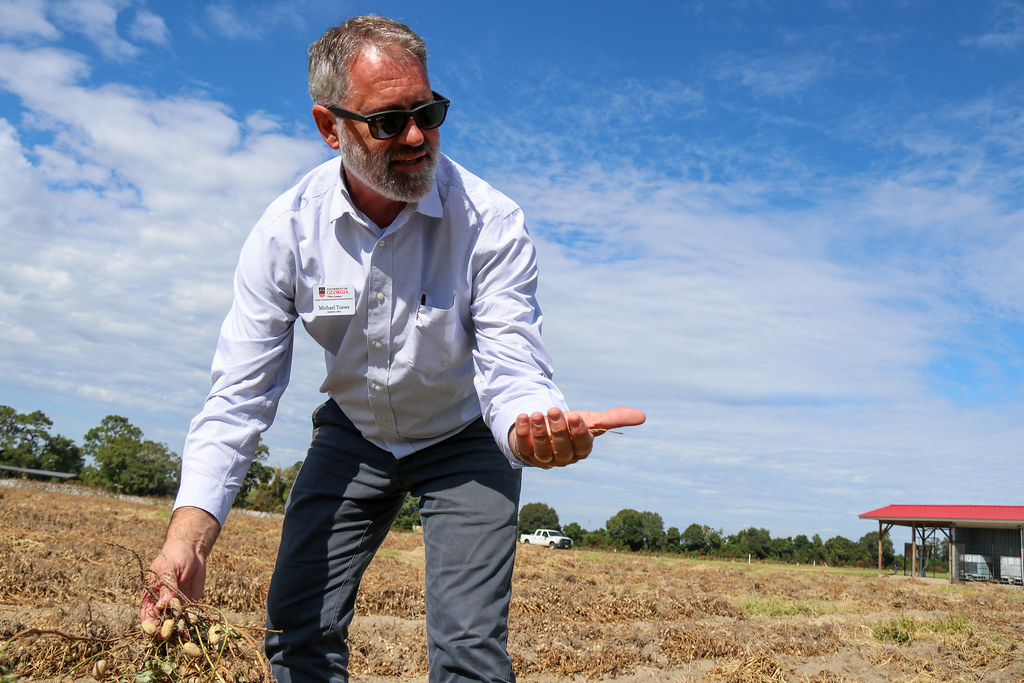University of Georgia scientists are counting on a tiny wasp to save the popular Gerbera daisy from being destroyed by an insect that finds its leaves tasty.
Popular cut flower
A member of the sunflower family, Gerbera daisies come in a variety of colors like yellow, pink, orange, white and red. It is widely grown for both the cut flower market and as an ornamental plant.
The pest that’s attacking it, called the leaf miner, does just like its name suggests. The adult feeds on the leaves and deposits eggs. The larvae then mine their way through the plant’s leaves, seeking nourishment and reducing the plant’s ability to photosynthesize. The feeding pattern makes the leaves variegated and leaves the grower with a plant that is unsellable for the potted-plant market.
Damages leaves, stems and flowers
“Leaf miner damage also affects the length of the stems, which is a major problem when the flowers are headed to florists who will use them in floral arrangements,” said Cheri Abraham, an entomologist with the UGA College of Agricultural and Environmental Sciences.
Left uncontrolled, the insect will eventually cause damage to the Gerbera flower, too.
Immature leaf miners live inside the leaves, making chemical control difficult. Having been in the U.S. since the early 1960s, the pest has built resistance to many chemical control methods. “They have cosmopolitan roots. They’re found anywhere flowers have been transported,” Abraham said.
Studying several options
Working with UGA entomologists Ron Oetting and Kris Braman, Abraham is looking at several options for controlling the pest.
In greenhouses on the UGA campus in Griffin, Ga., he is introducing the leaf miner’s parasitoid Diglyphus isaea. This tiny wasp could be a natural way to control the leaf miner. Since other greenhouse insects, including the wasp, are controlled by pesticides, Abraham also has to find a pesticide that won’t kill the wasp.
“This parasite (wasp) needs its host to be alive,” he said. “It lays an egg in the larval form of the leaf miner.”
Abraham is also studying characteristics of Gerbera daisies that the leaf miner doesn’t like, such the tiny hairs on the plant’s stem and waxy leaves.
Surveyed growers want locally-grown flowers
Roses, daisies and carnations top the list of the most requested locally grown cut flowers, according to a market analysis of south Georgia and north Florida florists by the UGA Center for Agribusiness and Economic Development. Gladiolus and Gerbera daisies bring the highest price per stem at $1.10 and 95 cents. Some 90 percent of the responding florists said they would consider buying locally grown fresh cut flowers when available.










